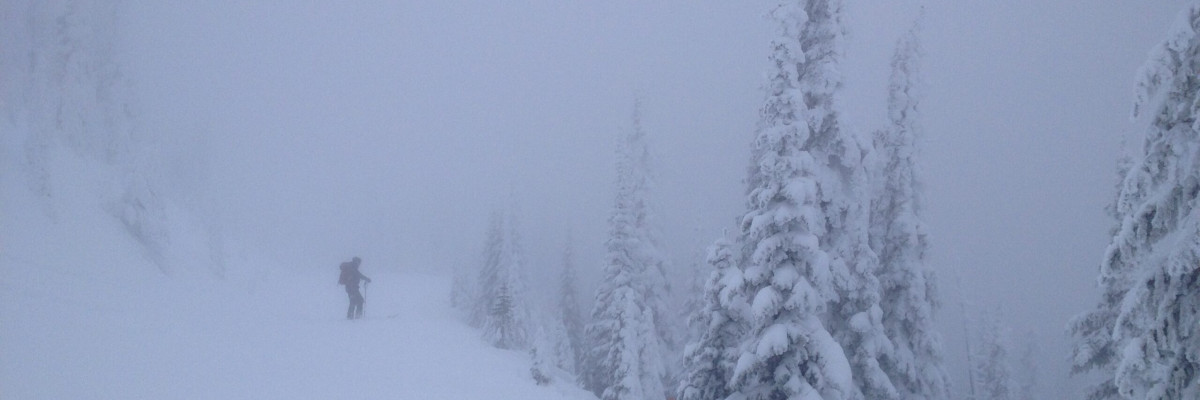The current avalanche danger is MODERATE in the West Central Montana Backcountry. Natural avalanches are unlikely, human triggered avalanches are possible. Heightened avalanche conditions may exist in isolated terrain.
Good morning this is Logan King with the West Central Montana Avalanche Center’s backcountry avalanche advisory for Saturday, December 19th. This information is the responsibility of the Forest Service and does not apply to operating ski areas and expires at midnight.
WEATHER AND SNOWPACK
The region has seen an additional 2-6 inches overnight bringing many mountain locations to well over a foot in the past 48 hours. Current temperatures for mountain locations in West Central Montana are in the mid to upper 20’sF and ridge top winds are light gusting to about 10mph primarily out of the NW.
The main avalanche concern continues to be loose dry avalanches. The new snow, for the most part is bonding well and has not been showing any signs of propagation in stability tests (video). Loose snow avalanches are often smaller in size but the risk is dependent on the terrain, so carefully consider consequences of getting caught in a slide even if it is a small slide.
Storm slabs are the secondary avalanche concern for the advisory area. Although they are not very reactive in stability tests with continued loading they may become reactive. The majority of the area has seen over a foot of snow in the last few days and is continuing to get more load so be aware that a tipping point may soon be reached and stay aware of changes throughout the day.
Faceted grains can still be found in nearly all pits in the advisory area, that said they appear to be moving towards rounds and strengthening but this can be a slow process. These persistent facets may still be reactive in cold and shallow snowpacks.
WEATHER AND AVALANCHE FORECAST
The forecast is calling for continued snow and colder temperatures. As more snow is added to the snowpack not only do the size of avalanches increase but they will potentially become more sensitive as well. Pay close attention to conditions as they change during the day. The forecast is also predicting continued moisture through mid week so stay safe and enjoy the snow while we have it, remember it is an El Nino after all.
Travis will issue the next advisory on Tuesday, December 22.
























